|
Cantata BWV 97
In allen meinen Taten
Examples from the Score |
|
Mvt. 1 | Mvt. 2 | Mvt. 3 | Mvt. 6 | Mvt. 7 | Mvt. 8 | Mvt. 9 |
| |
|
Mvt. 1 |
|
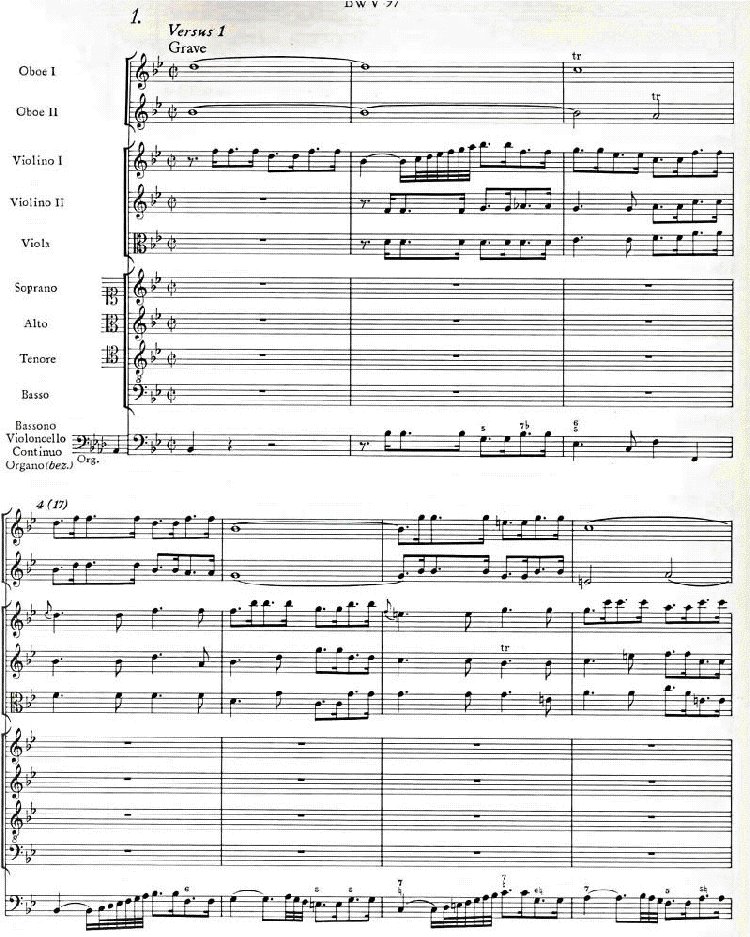
|
|
Example 1a above is the beginning of the French Ouverture at the very beginning of the cantata. Listen and watch at the same time, how differently the conductors (Rilling and Harnoncourt) interpret what is in the score. |
|
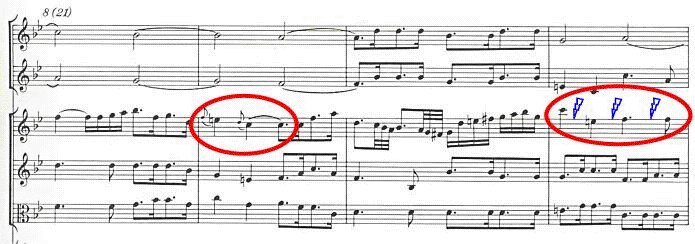
|
|
Example 1b is a fragment of the ouverture indicating the places to watch when Alice Harnoncourt (I'm almost certain she is playing) 'cuts up' any continuity that the music could and probably should have at this point and she does this at her husband's behest. She does not hold out the quarter notes to the end of their duration, but either lets the tone die out or inserts an eighth-note rest in between the quarter notes. What would Bach think of that? Well, perhaps it's all a matter of interpretation. |
|

|
|
Example 1c illustrates the extreme difficulty of the inner voices in the opening movement. At points like this, I can not hear the inner voices in Harnoncourt's recording. They simply disappear in the wash of sound. The basses would fail as well if they did not have the basso continuo backing them up. With Harnoncourt everything here except the soprano is mushy and muffled. |
| |
|
Mvt. 2 |
|
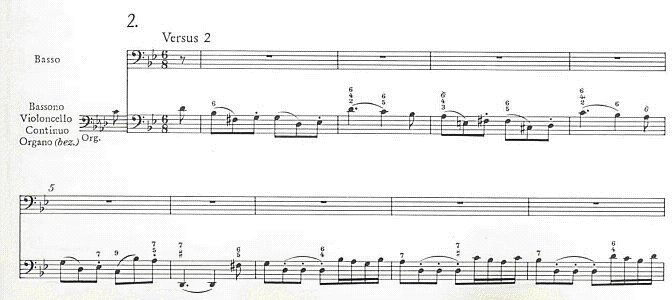
|
|
Example 2 the cello phrasing with Harnoncourt is exactly what Bach wanted, but listen to the Rilling. With Rilling it is a heavy legato. Is this interpretation? Why does Rilling do this? |
| |
|
Mvt. 3 |
|
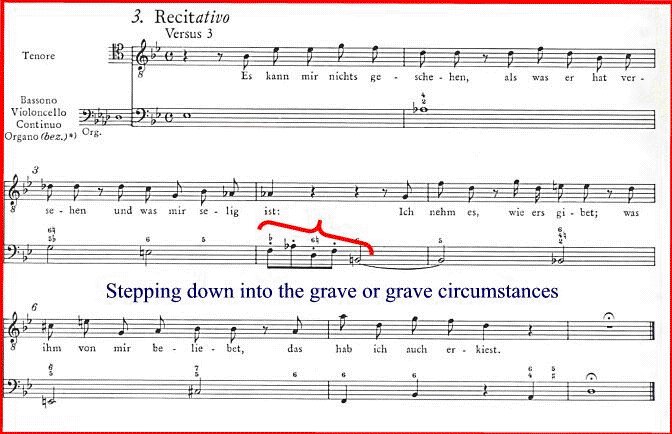
|
|
Example 3 In this recitative this little twist in the basso continuo underlines what the singer is singing about: he will accept whatever God gives him, in this case the prospect is anything but positive: either difficult circumstances on his trip or death as he steps downward to his end. |
| |
|
Mvt. 6 |
|
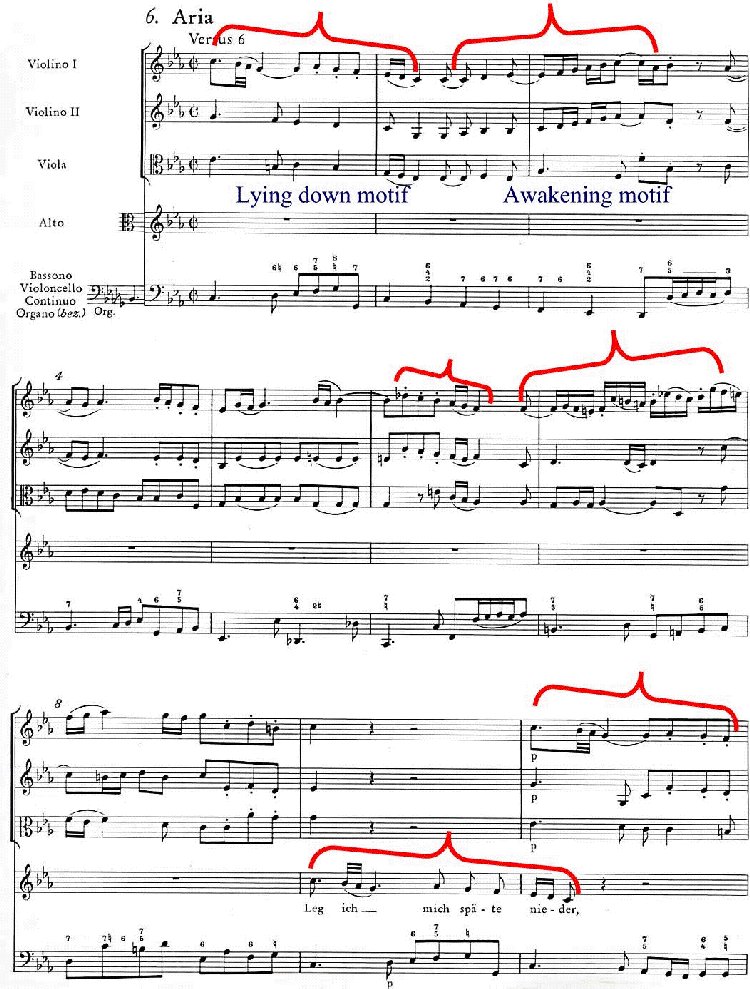
|
|
At the beginning of this movement, one can clearly see the evolution of the germinal motives of lying down and awakening again (the next morning or in a spiritual after-life) as these motivs will continue throughout the aria. |
|

|
|
A close-up of the interweaving and interplay of these motifs as the instrumentalists banter with the vocalist. |
| |
|
Mvt. 7 |
|
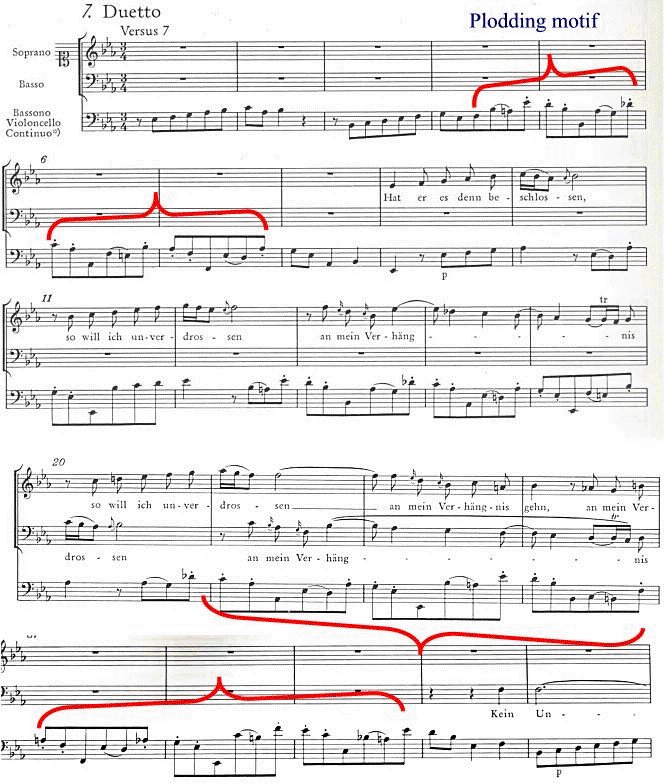
|
|
The key-words here are 'unverdrossen' and 'Verhängnis' = 'plodding' and 'that which you can get hung up in and not escape because of its inevitability.' The thought translates roughly as "I will continue to plod onward to whatever the Lord has decided for me and that which he has decided for me is a fate, a destiny that is imposed upon me, possibly as a penalty or punishment for something that I have already done." Note the wildly stalking musical figure that jumps all over the place. Is it an attempt to escape or is it a determined plodding toward an inevitability. |
| |
|
Mvt. 8 |
|

|
|
An interesting musical contrast between Death and Life. Notice the sequence of these two events. |
|
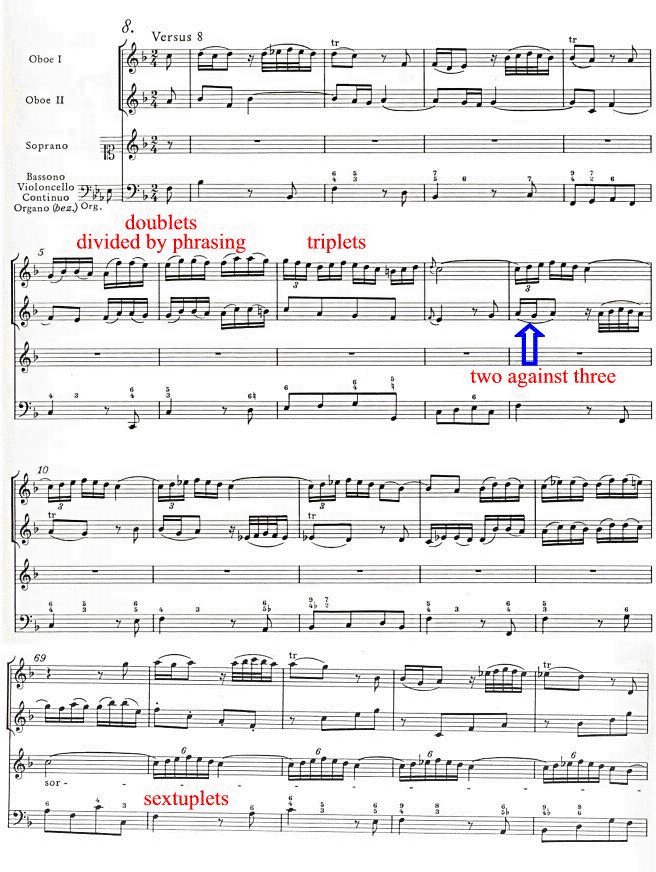
|
|
A rough translation of part of the text of this aria: "I'll let God worry about the time, he knows the correct time." Here Bach uses as a key-word: 'time'. He complicates the measuring of time within a measure. In a sense the vocalist and the instrumentalists have left 'the worrying about time' up to the composer and conductor, who then have to make sure that the shifting patterns of notes distributed over each measure come out properly. Two against three is just one of the complications Bach inserts into this composition. |
| |
|
Mvt. 9 |
|

|
|
This is a section from the chorale to illustrate how elusive, or inconsistent Harnoncourt can be. He can easily make a chorale very discontinuous because he normally observes every comma in the text as an opportunity to break the flowing, legato stream that typifies good choral singing. He also has a penchant for strong accents followed either by a premature cut-off of the note value or a severely diminished volume of the unaccented syllables. |
| |
|
Sources for these snippets: NBA I/34
Contributed by Thomas Braatz (March 13, 2001) |